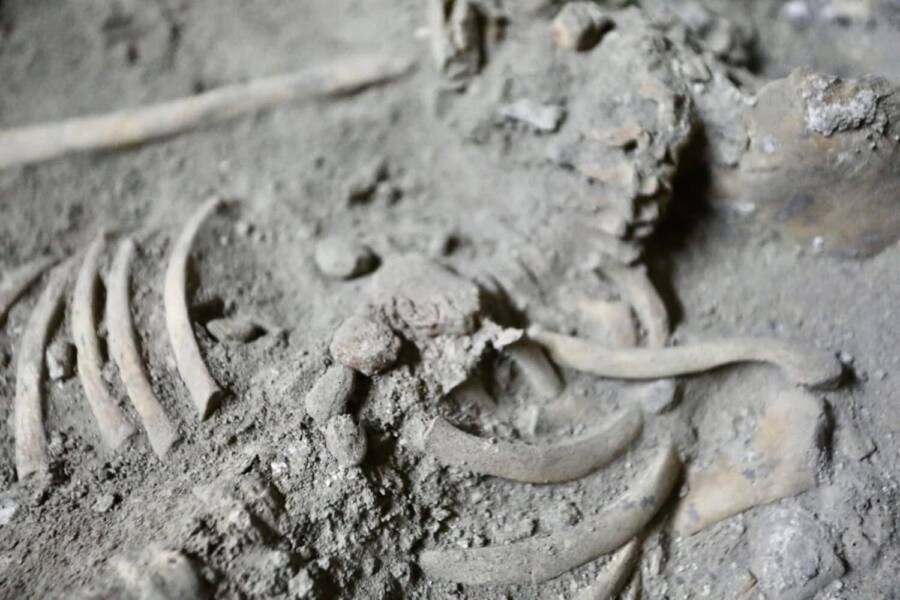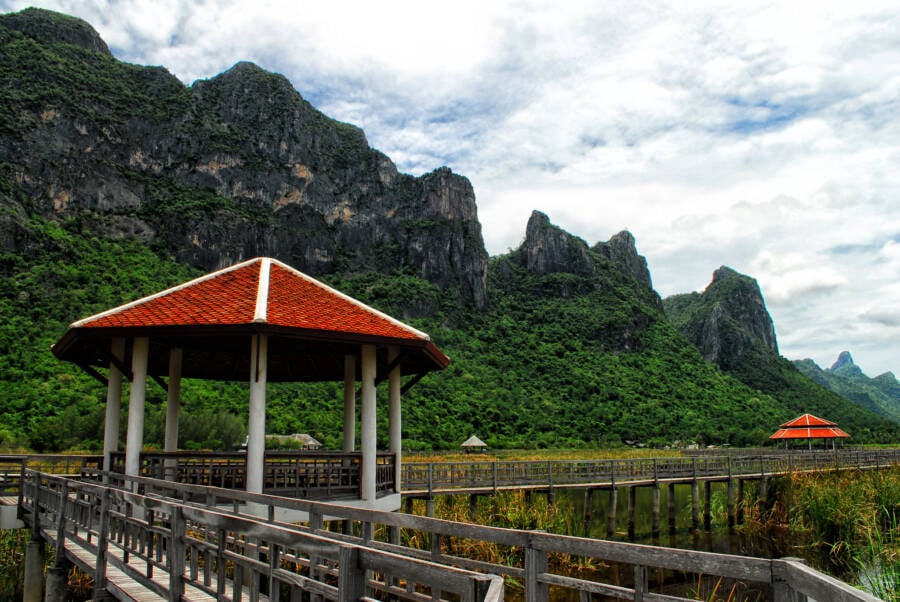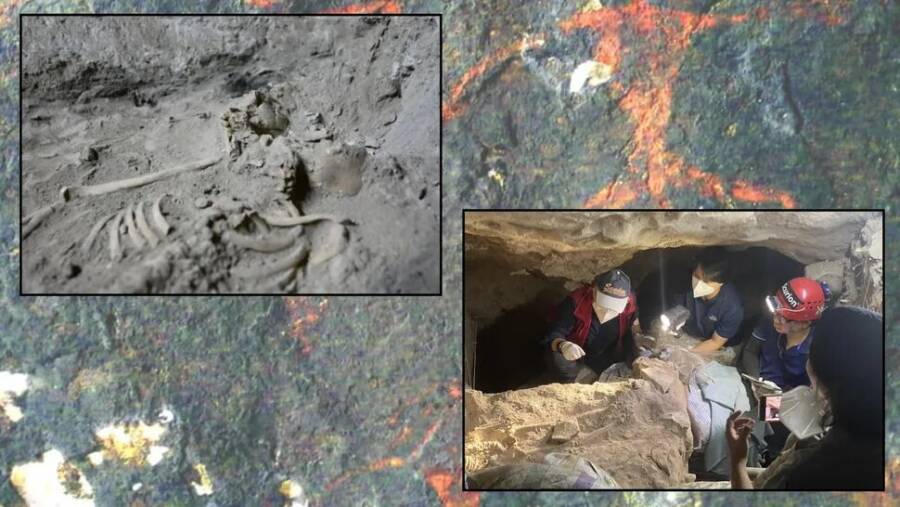The child, nicknamed "Pangpond" by archaeologists, was found buried with ritualistic symbols of blood and power.

PR Thai GovernmentThe 29,000-year-old remains of the Stone Age child.
In a record-breaking discovery, archaeologists have uncovered the 29,000-year-old remains of a young child in Khao Sam Roi Yot National Park in Thailand — the oldest human remains ever found in the country.
Unearthed from Tham Din cave, the child, who archaeologists nicknamed “Pangpond,” was discovered about 6.5 feet beneath the cave’s floor. The remains suggest that the child was about eight years old at the time of their death and had undergone a ritualistic burial.
The find has given researchers a peek into the cultural practices of prehistoric hunter-gatherers in the region, offering a rare glimpse into the mysterious lives of Stone Age humans in Southeast Asia.
Discovering Thailand’s Oldest Known Human Remains In Tham Din Cave

Thanate Tan/FlickrA trail in Khao Sam Roi Yot National Park in Thailand.
In 2020, archaeologists began exploring Tham Din cave in Khao Sam Roi Yot National Park in Thailand after discovering ancient paintings in its interior chambers. The paintings, located on the ceilings of three chambers inside Tham Din, were mostly hunting scenes created with red ocher. Some paintings showed humans using bows and arrows to hunt deer.
Then, in 2022, archaeologists found animal bones, pottery, and other items, pointing to ancient human activity in the cave. Forensic labs in the U.S. determined that these items dated between 10,000 and 29,000 years old.
Archaeologists then dug deeper and uncovered the most significant finding yet: the remains of a child who died 29,000 years ago.
Examining The 29,000-Year-Old Human Skeleton

PR Thai GovernmentThe remains of “Pangpond” and the excavation that uncovered the ancient child.
Roughly 6.5 feet below the cave’s floor, the remains of the ancient child were discovered in remarkably good condition considering their age. The small size of the skull and the bone joints indicated that the remains belonged to a young child, roughly six to eight years old.
The child, nicknamed “Pangpond” after a fictional character from a Thai TV show, lived in the Paleolithic Period — or the Old Stone Age — an era characterized by early stone tool construction and use.
Pangpond is the oldest human skeleton ever discovered in Thailand, possibly pushing back the timeline of human occupation of the region back tens of thousands of years earlier than expected.
The prehistoric child was buried facing up. This, coupled with the discovery of stones and red pigments on the child’s body, points to a ritualistic burial that may have involved wrapping or tying the child’s remains. Experts believe that the stones and red pigments may have been symbols of “blood and power” for prehistoric humans. Additionally, researchers found charcoal and ash around the body, indicating that the child was smoked prior to burial.
“It is believed that the way the body was treated involved rituals, including a theory that this was one way to keep it from being eaten by wild animals. We have learnt from the position and direction in which the body was placed that it was a ritual, meaning the community living here had their own culture and way of living,” Kannika Premjai, who led the team of archaeologists at the site in Tham Din cave, told the Bangkok Post.
Pangpond has not only shed light on the rituals of prehistoric groups in Thailand, but also their adaptability to changing environments. When Pangpond was alive, much of Southeast Asia was connected due to low sea levels of the time, creating a landmass that is now known as Sundaland. As time went on, parts of this area were submerged, dispersing populations to places like Khao Sam Roi Yot.
“The Din Cave site offers a unique window into the past, documenting the evolution of human societies over thousands of years,” a spokesperson from Thailand’s Fine Arts Department (FAD) told Thai PBS World.
The Thai Department of National Parks, Wildlife and Plant Conservation intends to open Tham Din cave to the public once excavations are complete, providing visitors with a unique opportunity to explore years of prehistory.
After reading about Pangpond, dive into the story of Ötzi the Iceman, the Copper Age mummy unearthed in the Alps. Then, read about the Callao Man, the hobbit-like early human ancestor who lived 67,000 years ago.





